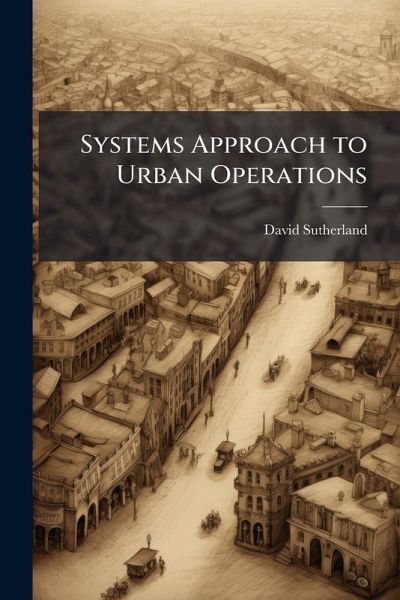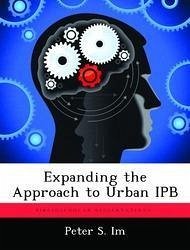
Systems Approach to Urban Operations
Versandkostenfrei!
Versandfertig in über 4 Wochen
15,99 €
inkl. MwSt.
Weitere Ausgaben:

PAYBACK Punkte
8 °P sammeln!
This monograph describes a possible technique to allow military planners to identify key objectives that may be affected in gaining control of a city without destroying it. This technique involves viewing a city as a complex "system of systems" and offers the planner insights as to where to apply military means to achieve the desired ends. While much has been written on Effect Based Operations (EBO), this monograph attempts to "operationalize" the concept. It presents a planning technique to assist in identifying targets, understanding target interrelationships, and analyzing second and third ...
This monograph describes a possible technique to allow military planners to identify key objectives that may be affected in gaining control of a city without destroying it. This technique involves viewing a city as a complex "system of systems" and offers the planner insights as to where to apply military means to achieve the desired ends. While much has been written on Effect Based Operations (EBO), this monograph attempts to "operationalize" the concept. It presents a planning technique to assist in identifying targets, understanding target interrelationships, and analyzing second and third order effects. This study uses the urban environment to present this planning technique. The primary research question is: Is it possible to seize and control a city without destroying it? The secondary question is: Is there a systems approach process to achieve military success in an urban environment? The purpose of this paper is to provide the operational commander with an approach to manage the complexity of the urban environment. It should provide the reader with a systems approach that is grounded in doctrine, a methodology to reduce complexity, and a practical planning approach to assist in urban operations. The systems approach discussed in this paper allows commanders to seize control of a city without destroying it. The approach can be seen as a graduated response matrix where critical requirements are affected in sequence in order to achieve a desired result. While it is impossible to determine to which threshold the adversary would relinquish his control of the city (aim), the systems approach does provide a method to gradually reach that threshold. In addition, the systems approach allows commanders to war-game and record the effects of an action throughout the entire greater system. This provides the commander with an analysis tool that captures potential second and third order effects that may or may not be desired. This is a technique that should be incorporate This work has been selected by scholars as being culturally important, and is part of the knowledge base of civilization as we know it. This work was reproduced from the original artifact, and remains as true to the original work as possible. Therefore, you will see the original copyright references, library stamps (as most of these works have been housed in our most important libraries around the world), and other notations in the work. This work is in the public domain in the United States of America, and possibly other nations. Within the United States, you may freely copy and distribute this work, as no entity (individual or corporate) has a copyright on the body of the work. As a reproduction of a historical artifact, this work may contain missing or blurred pages, poor pictures, errant marks, etc. Scholars believe, and we concur, that this work is important enough to be preserved, reproduced, and made generally available to the public. We appreciate your support of the preservation process, and thank you for being an important part of keeping this knowledge alive and relevant.












